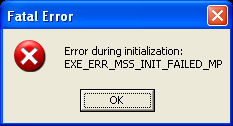Intel's Core 2 Quadro Kentsfield: Four Cores on a Rampage
System Bus: FSB1066 Vs. FSB1333
Intel zipped up the FSB speed for the Core 2 Quadro to 333 MHz compared with the 266 MHz for Core 2 Duo. Our test results reveal that a FSB1333 (true 333 MHz) does not entail advantages - at least not based on the tests at a CPU clock speed of 2.66 GHz. At CPU clock speeds of 3.0 GHz and above, and memory speeds beyond the DDR2-1000 mark (true 500 MHz), the FSB1333 shows what it is capable of.
It certainly makes sense to increase the front side bus to FSB1333, since each Core 2 "Conroe" processor has to use this bus to communicate with the other one and fetch or write L2 cache data, especially when many applications run simultaneously (aka multitasking). Speeds such as those pose no problem for 90-nm chipsets.
One should not forget - viewed from the perspective of the Pentium 4 - that the Core 2 micro-architecture offers a few features to ease the strain on memory access, whereby higher FSB or memory speeds barely register any speed advantages.
Temperatures: Clearly Hotter Than Core 2 Duo/Extreme
The maximum temperature of the Core 2 Quadro under full load was 66 degrees Celsius.
The peak core temperature recorded during the test was 66 degrees Celsius in conjunction with an Intel retail cooler. In contrast, the maximum temperature of the Core 2 Extreme was 43 degrees Celsius.
The maximum temperature of the Pentium Extreme Edition 965 at full load is 79 degrees Celsius.
An important note: the SpeedStep feature did not work as touted in the test sample. The core voltage dropped to 1.050 V when SpeedStep was enabled, but the computer crashed within mere seconds of activation
Get Tom's Hardware's best news and in-depth reviews, straight to your inbox.
Applications Troubles
Two problems cropped up during the tests. The first was that the game Call of Duty 2 (version 1.03) would not launch. The program crashed with an MP_Error (multicore):
Call of Duty II did not launch on our Core 2 Quadro system.
The second was that the Microsoft WMA Encoder is so slow that execution takes ages. Both of these problems should soon be solved with a core allocation. This is not only the case with Intel; it would likewise occur with any AMD system with more than two CPUs.
The irregularity of the thread distribution on the individual CPUs can be clearly seen here.
These problems are not new, and have already occurred in the past with an Intel Pentium Extreme Edition 965 when users activated Hyper Threading to have four virtual processors at their disposal.
Current page: System Bus: FSB1066 Vs. FSB1333
Prev Page Platforms: Intel 965 And 975X Next Page Core 2 Quadro: Record Performance!


